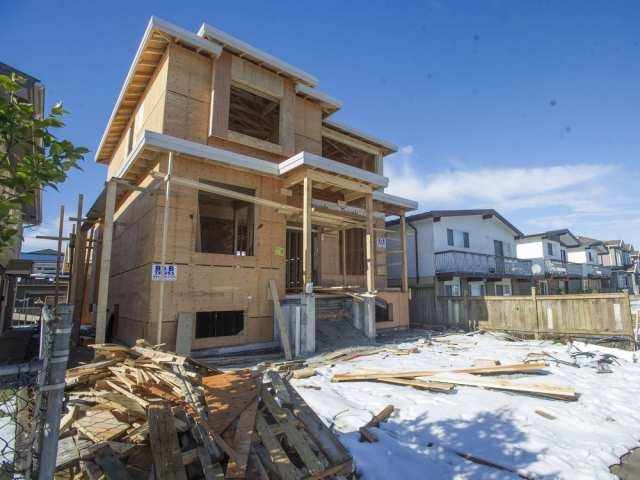The NDP budget forecast a drop in housing starts by as much as 30 per cent across B.C. over the next three years, sparking debate about whether there are too many, or too few, condos being built in 91原创’s expensive market.
Economists at major banks recently joined geographers in comparing 91原创 and Toronto when it comes to the ratio of condo units to number of households.
While population growth in 91原创 has been lagging that in Toronto, there are more newly completed but unoccupied condo units in 91原创, according to Stephen Brown, a senior Canada economist at London-based Capital Economics. He found that at the end of last year, there were some 2,000 such units, compared to 1,500 at the beginning of 2018.
“By contrast, in Toronto, the number of (newly completed and unoccupied) units is just 500, despite the population being 2.5 times larger. … The supply situation will probably get much worse. There are currently 42,000 units under construction in 91原创, compared to 71,000 in Toronto. 91原创 is therefore building 1.2 units for every person that arrived in 91原创 in the past year, compared to just 0.5 units in Toronto.”
In Toronto, Benjamin Tal, an economist at CIBC Capital Markets, agreed that population growth in 91原创 has lagged while “supply, mainly in the high-rise segment, has risen sharply. The number of completed and unabsorbed units in 91原创 is on the rise. In the third quarter (of 2018), the ratio of units under construction to household formation in 91原创 was elevated … while Toronto was still in line with long-term averages.”
At 91原创-based Urban Analytics, managing principal Michael Ferreira, who tracks data about new multi-family projects, pegged the number of “completed and unsold units” in 91原创 at just 223 at the end of 2018, “which is nowhere close to being an oversupply situation.” Across Metro 91原创, said Ferreira, “there are fewer than 1,000 unsold condominium units either under construction or completed and move-in ready.”
Other critics argue that estimates of oversupply don’t necessarily take into account the demolition of older units, which reduces the total supply.
As well, census numbers used in some studies do not count the number of temporary foreign workers and students moving into cities, said Anne McMullin, CEO and president of the Urban Development Institute (UDI), which represents developers. She also noted that investors rent out units that form an important secondary rental market.
“We also have to look at building for population growth for the next 10 years, not just now,” said SFU professor of real estate finance Andrey Pavlov.
Pavlov said the number of homes stuck in the permit approval process in the Lower Mainland was estimated to be 108,000 in 2017. He has been unable to get updated information from municipalities, but said clearing this backlog would greatly increase supply and potentially bring down prices.
The provincial Ministry of Finance said housing starts are at near-record highs, and noted the previous Liberal government projected 27,521 housing starts across the province in 2018, but the actual number was 48 per cent higher, totalling 40,857. The historical average is closer to 30,000 units, which is what the NDP budget is forecasting by 2021.
Andy Yan, director of SFU’s City Program, looked at all housing starts in Metro 91原创, including co-ops, condos, rentals and homes, going back more than a decade, and found that after a plunge in 2009 (following the credit crisis), the number of housing starts steadily rose from around 15,000 to 20,000 between 2010 to 2015. The number spiked to almost 28,000 in 2016 and then started to fall to 26,200 in 2017 and again to 23,400 in 2018.
It is the opposite of what had been happening ahead of the peak, when several factors came together, said Yan. Now, “we are in an era of declining assessments. Interest rates are going up. Credit is harder to obtain, as is global capital.”



